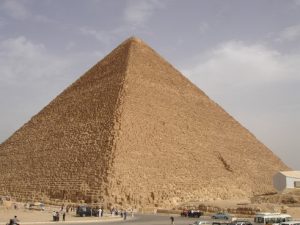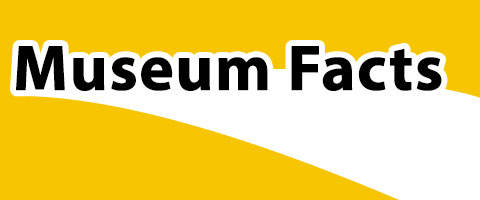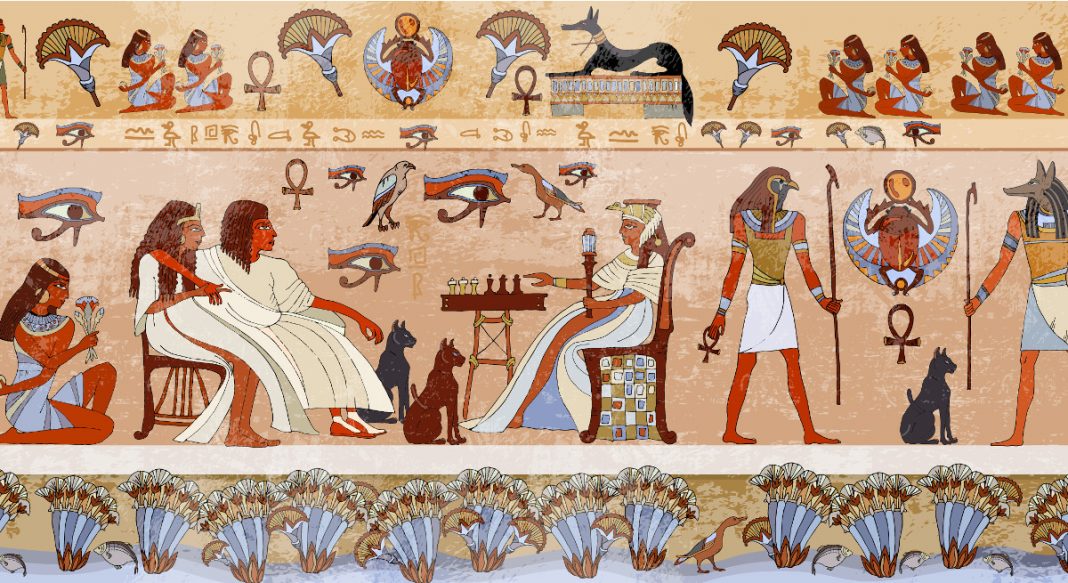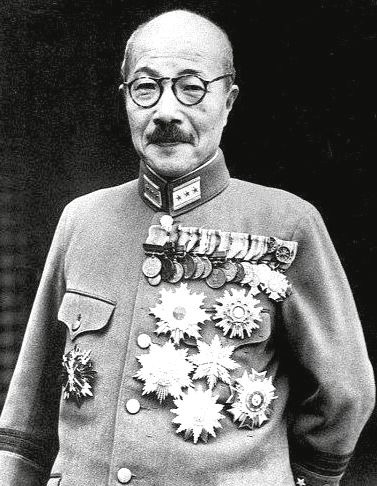Symbols played an important role in Ancient Egypt. The Egyptians depicted them on their temple walls, inscriptions, obelisks, and hieroglyphics. Additionally, these symbols were instrumental in bringing good fortune and offering protection. We have compiled a list of the 10 most important ancient Egyptian symbols.
Let us take a look at the 10 Most Important Ancient Egyptian Symbols.
1) Ankh- The most easily recognised ancient Egyptian symbol
The most easily recognised ancient Egyptian symbol is the ankh. The ankh essentially represents eternal life in Ancient Egypt. Its Latin translation is crux ansata, and it is essentially a cross surmounted by a loop. Egyptian iconography often depicts the talisman in the hands of important Egyptian figures, such as pharaohs and kings. Additionally, according to many, it is thThe ankh also symbolises the cohesion of
Additionally, according to many, it is the first cross.
The ankh also symbolises the cohesion of heaven and earth. According to some historians, it may have developed from the tjet, the ‘Knot of Isis,’ a similar symbol. It is depicted in almost every kind of ancient Egyptian artwork, from sarcophagi to tomb paintings, hieroglyphics, statuary and engravings.

2) Djed- An ancient Egyptian symbol that represents stability, resurrection and eternal life
Another commonly found symbol in Ancient Egypt is the Djed. The pillar-like symbol essentially represents stability, resurrection and eternal life. According to the ancient Egyptian religion, it portrays the spine of the god Osiris. Additionally, the spell 151 of the Book of the Dead deems the Djed fetish as “the magical protection of Osiris”. The spell was recited over this amulet as it was put on the neck of a mummy.
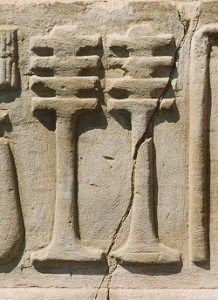
3) The Was Sceptre
The was sceptre a.k.a tcham-sceptre is a symbol that appears often in ancient Egyptian relics, art, and hieroglyphics. It is depicted as a stylized animal head at the top of a long, straight staff with a forked end. The was sceptre symbolises power & dominion. And the ancient Egyptians often associated it with the gods Set or Anubis. The was sceptre was also found in the hands of the pharaohs. In the funerary context, the symbol was responsible for the well-being of the deceased.
Additionally, according to the ancient Egyptians, the sky was balanced on four pillars, which could have been in the shape of the was. Furthermore, in ancient Egyptian mythology, the god Ptah holds the was sceptre and combines it with the symbols ankh and djed, with a circle at the bottom symbolizing unity. The three symbols together essentially create a powerful combination.

4) The Scarab
Another popular ancient Egyptian symbol is the scarab. The beetle image essentially represents the Scarabaeus sacer, a species of the dung beetle. The beetle lays its eggs in dung balls fashioned through rolling, the dung subsequently serves as food for the young when they hatch.
The ancient Egyptians associated the beetle with the god Khepri who was believed to roll the ball of the morning sun across the sky and push it up into the dawn the next day. Later on, amulets in the form of scarab beetles became very popular in Ancient Egypt by the early Middle Kingdom and remained so for the duration of Egypt’s history until the rise of Christianity.

5) The Tjet
The tjet a.k.a the “knot of Isis” and “the blood of Isis” is an ancient Egyptian symbol associated with the goddess Isis. It is very similar to the ankh except that its arms curve down. It was considered a powerful symbol of protection in the afterlife and according to the Book of the Dead, the tjet made of a blood-red stone was placed at the throat of the mummy.
Its red colour also symbolises menstruation and childbirth. According to myth, Isis used this amulet to protect Horus while he was still in her womb. Hence, pregnant women used magic spells linked with it to prevent undesired miscarriages. The ancient Egyptians engraved tjet on their bedposts and temple walls. And it was most popular during the New Kingdom of Egypt coinciding with the peak of the Isis cult.
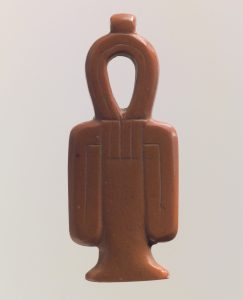
6) The Crook & Flail- The most prevalent symbols of royalty in Ancient Egypt
The crook (heka) and flail (nekhakha) were the most prevalent symbols of royalty in Ancient Egypt. The crook was similar to the shepherd staff while the flail was an agricultural tool to thresh grain. Since Osiris was originally an agricultural/fertility deity, these symbols were originally his attributes that subsequently became insignia of pharaonic authority.
According to myth, the evil god Set assassinated Osiris and seized his kingdom. However, Isis resurrected him and bore him the son Horus. Horus defeated Set and gained back the land. He then took the crook and flail of his father to signify the legitimacy of his reign. Thus the crook and the flail became the symbols of a king.
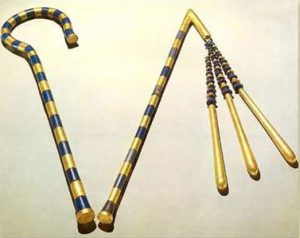
7) The Shen
The shen, a.k.a the shen ring, is a loop of knotted rope that forms a circle. Its name comes from the Egyptian word for ‘encircle.’ and it symbolises eternal protection. The ancient Egyptians frequently wore it around the neck for protection. The falcon god Horus and the vulture goddess Nekhbet are mainly seen holding the shen. The ancient Egyptian symbol is frequently seen on sarcophagi, in temples and tombs as well as personal inscriptions.

8) The Eye of Horus- An important and famous ancient Egyptian symbol
Another important ancient Egyptian symbol is the Eye of Horus. Also known as udjat-eye, it essentially represents well-being, healing, and protection. According to myth, Horus lost his left eye in a battle with Set. However, Hathor restored his eye, and this restoration came to represent the process of making whole and healing. Hence ancient Egyptians used the symbol in healing. The Eye of Horus remained one of the most powerful symbols throughout Egypt’s history.
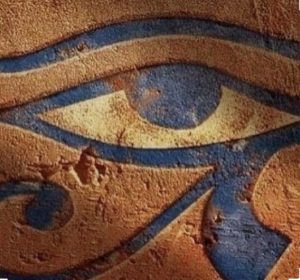
9) The sensen
The sensen i.e the lotus flower represents life, creation, rebirth and, especially, the sun. It appears in many Egyptian artworks and dates to the Early Dynastic Period. The lotus closes in the evening and sinks below water and then emerges and blooms at daybreak; akin to the pattern of the sun and therefore life.
Ancient Egyptians associated the flower with the god Osiris. Additionally, canopic jars frequently depict the Four Sons of Horus standing together on the lotus in the presence of Osiris. It was also the symbol of the Upper Egypt while the papyrus was the symbol of the Lower Egypt. Furthermore, images sometimes depict it with its stem entwined with that of the papyrus plant. Thus signifying the unification of the two regions.
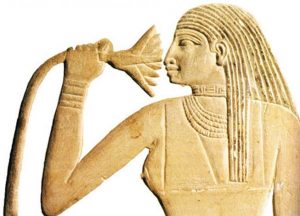
10) Benben
According to ancient Egyptian creation myth, the benben was the primordial mound upon which the creator deity Atum stood at the beginning of creation. Although one doesn’t easily recognise its name, it is a famous ancient Egyptian symbol. The pyramids of Egypt essentially represent the benben as they rise from the earth towards the sky.
According to one myth, at the beginning of time, there was only a watery abyss. This was until the benben rose as the first dry land. Atum then settled on the benben and started creation. The pyramids and other similar structures represented both creation and eternity by invoking the symbolism of this myth. The benben dates from the Early Dynastic Period but became more prevalent during the Old Kingdom. The symbol appears on many inscriptions, engravings, temple walls and sarcophagi.
